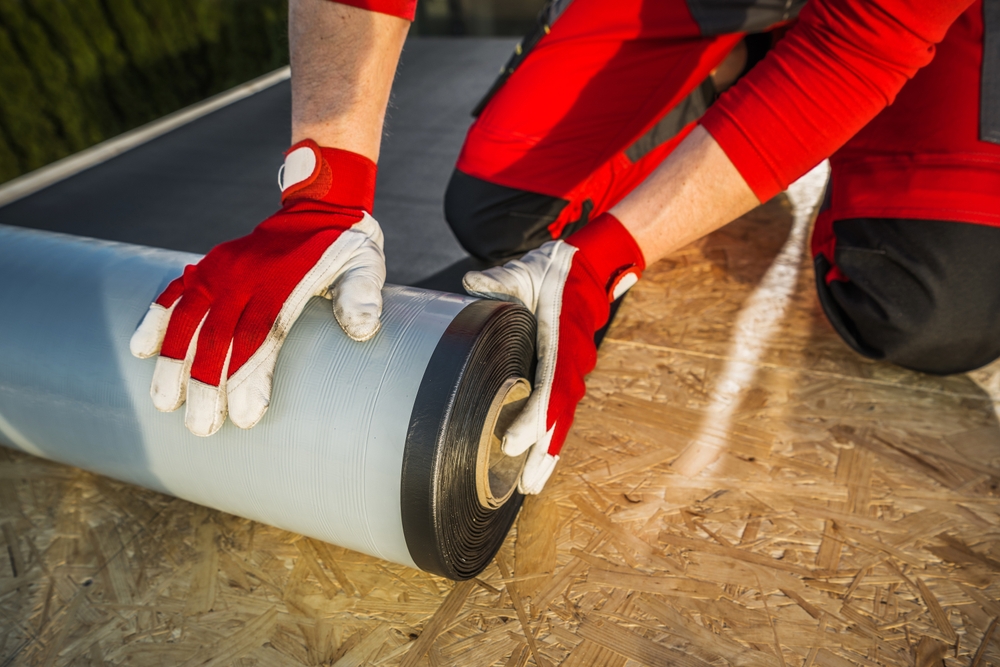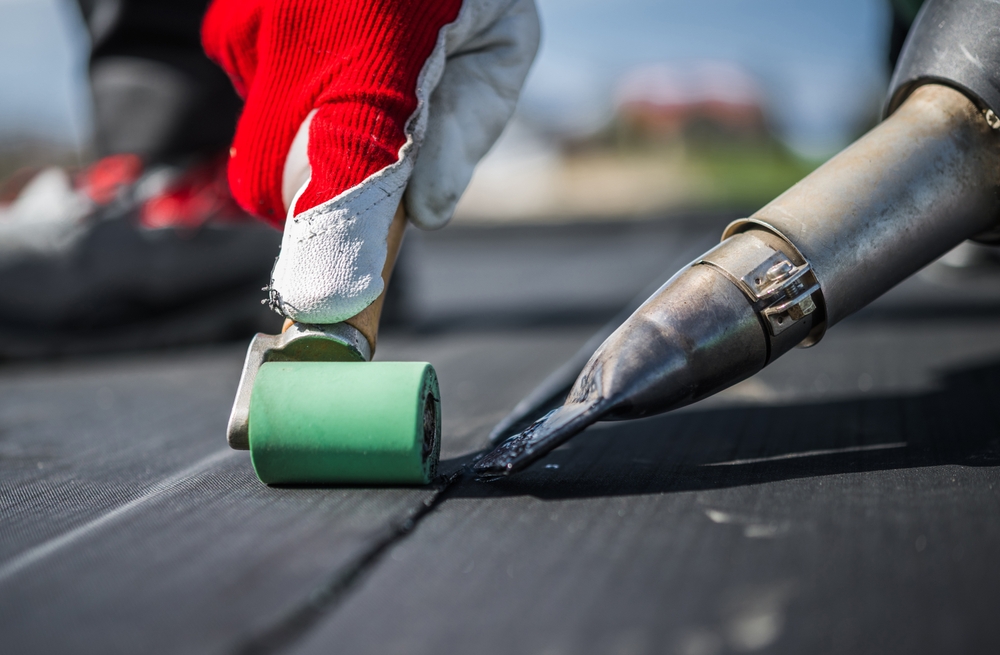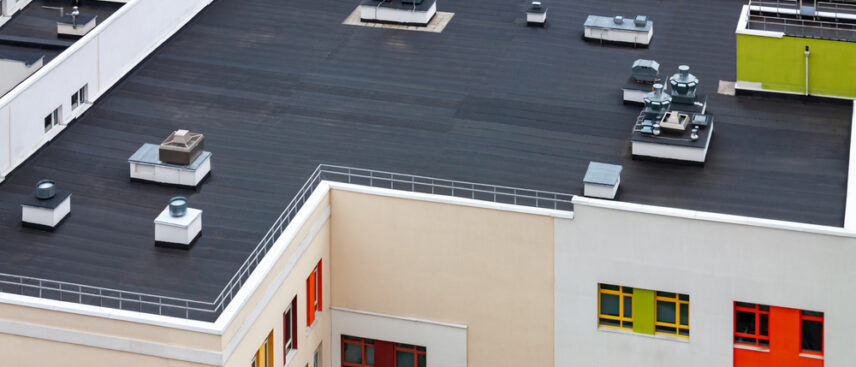Flat and low-slope roofs are most commonly seen in commercial buildings. Yet this kind of design can add a modern flair to a residential structure as well. No matter where the flat roof is installed, there are several materials to choose from that offer a mix of benefits and installation requirements. If you’re considering ethylene propylene diene terpolymer (EPDM) or membrane roofing for your project, you need to know how it will perform in challenging situations.
Take a deep dive into the details of single-ply membrane roofing systems, including EPDM coverings, for flat and low-slope roofs.
Understanding EPDM Membranes

EPDM is a type of synthetic rubber roofing that is installed in the form of a membrane. Membrane roofing is highly flexible and allows for a single layer of material to protect the flat or low-slope roof. Other types of flat roofing tend to involve multiple layers of material, increasing the total weight of the roof assembly and requiring careful attention to detail during installation.
Since EPDM is installed as a single layer of large sheets in most cases, it’s relatively easy to avoid errors and ensure a water-tight seal. Minimizing the number of seams also reduces potential leak points.
This synthetic rubber roofing is known for being available in a wide range of thicknesses. This means it can be used on both large-scale commercial structures and smaller residential projects. It’s also popular among residential roofers for offering better flexibility than other membranes, providing better coverage around low-slope valleys and other unusual areas.
EPDM offers good weather resistance and a long lifespan as well to reduce the need for constant recovery of the roof surface.
You’ll find that most EPDM membranes are available in black to help protect the material from UV degradation, but reflective white membranes are also popular to help reduce cooling costs in the summer.
Benefits of EPDM Roofing
There are many benefits to this kind of single-ply roofing, especially in challenging situations where other flat roof coverings may not work so well.
Advanced Durability
With proper installation and routine maintenance, EPDM roofing can last decades. Some commercial installations last 30 to 50 years, while residential roofing enjoys a similar lifespan. This can greatly reduce the cost of roofing per year by reducing the need for re-roofing.
Improved Weather Resistance
Many flat and low-slope roofing materials suffer from accelerated wear and tear from routine weather events. The ponding of water and constant exposure to sunlight can lead to the need to replace some flat roofs every decade.
Thanks to the combination of both ethylene and propylene into one synthetic rubber product, you can expect far greater weather resistance from this type of roofing than many other options. Even ozone exposure, extreme temperatures, and hail impacts won’t necessarily ruin the roof.
Low Maintenance Requirements
You only need to inspect the EPDM roof every six months to once a year. It’ll need cleaning now and then to remove pine needles, leaves, dirt, and any other debris. For most commercial and residential buildings, only a few hours of maintenance is needed every year.
Energy Efficiency
Choosing black EPDM roofing can help the building absorb heat in colder climates, while white roofing will reflect sunlight to reduce cooling costs.
Environmentally Friendly Option
This kind of roofing is highly recyclable in most areas. Using an EPDM design can help you achieve LEED (Leadership in Energy and Environmental Design) certification for sustainable building practices.
Installation Options for EPDM Roofs

There are three main installation methods used for EPDM roofs. Most of them work well for commercial installations, but only some are appropriate for residential installations. Your roofing contractor can help you select the right installation method depending on the structure’s design and the weather challenges local to your area.
Fully Adhered Installation
Glued down directly to the roof deck, this method of installation provides a watertight bond and an attractive appearance. However, it requires a smooth and clean roof deck and may not resist wind as well as other methods. This is the option most commonly used for residential installation.
Mechanically Attached Installation
Mechanically attached membranes are strong and can be combined with adhesives for a watertight seal. Fasteners and plates help hold the material tight to the surface when wind or snow loads put tension on it. It’s easily attached to uneven or sloped roof surfaces.
Ballasted Installation
Here, the EPDM membrane is spread across the roof surface and covered in gravel or paving stones. The weight holds down the membrane without adhesives or all the work of putting in fasteners.
This offers the best protection from wind lifting, increases UV resistance by keeping sunlight from reaching the membrane, and reduces the chances of leaks from loose or missing fasteners. The membrane can easily expand and contract under the ballast material without risking damage to the seams. Your structure must be built to withstand the extra weight of the ballast material to use this method.
Considerations for EPDM Roofing
There are a few factors to consider before choosing this kind of membrane roofing. First, EPDM is only suitable for low-slope and flat roofs. Structures exceeding a 2:12 slope may work better with a different kind of roofing.
Second, you’ll need professional installation for this material. The large sheets and hazardous adhesives need careful handling to ensure good results. It’s not the kind of material you can install on your own, especially if you want to enjoy warranty protection from the manufacturer.
Finally, you will need to commit to routine inspections and maintenance. Although EPDM requires less work than many other types of flat roof surfaces, it still needs regular cleaning and sealing. Keeping the seams sealed and checking penetrations like vents and skylights is the key to maintaining its watertight design.
Maintenance and Repair of EPDM Roofs

- Regularly inspect the entire roof surface for loose seams, tears, punctures, or signs of leaks. Note any ponding or pooling, which can indicate a sinking roof deck.
- Remove all debris promptly and clean the surface at least twice a year with mild soap and water. Don’t let leaves and pine needles accumulate since they can block the roof drains and lead to ponding that damages the membrane.
- Deal with any minor tears or punctures promptly with appropriate EPDM patching kits with matching adhesives. If there is damage that is more than a few inches long or in more than one spot, call in the professionals to protect the roof from further degradation.
EPDM is a great roofing option for commercial and residential structures alike. If you’re interested in a flat roof or a low-slope design, consult a qualified roofing contractor in your area to determine the right choice for your specific needs.
